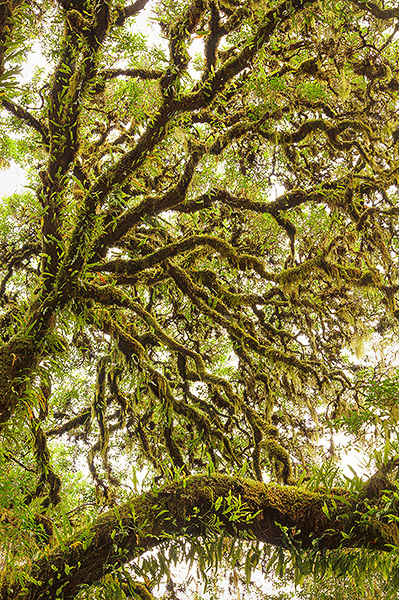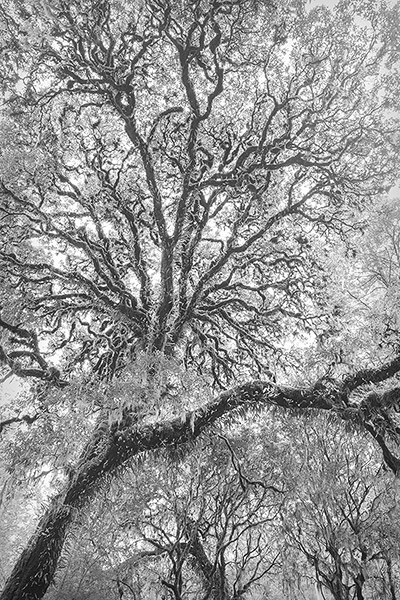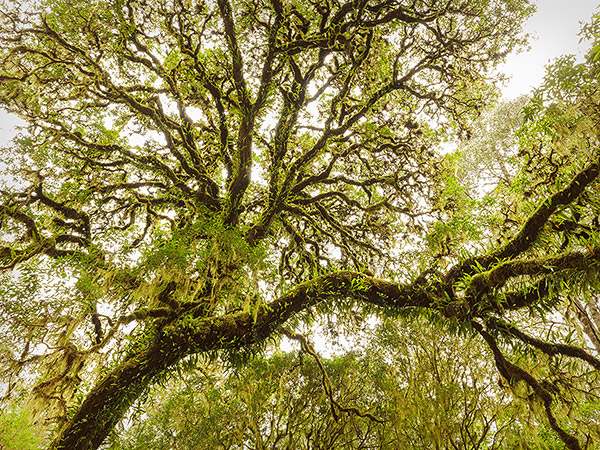"Eternity", Myrtle Beech Tree, Image 1, Victoria, Australia
(Click image to enlarge)
"Eternity", Myrtle Beech Tree, Image 2, Victoria, Australia
(Click image to enlarge)
"Eternity", Myrtle Beech Tree, Image 3, Victoria, Australia
(Click image to enlarge)
I was surprised to find that the tall mountain ash forests of southern Victoria are not the last stage of natural succession for the region. Myrtle beech (Nothofagus cunninghamii) forests are, and they are not easy to find. We found a few isolated trees in a very old mountain ash forest an hour from home, but for a long while I was unable to find what I was after. Finding a myrtle beech forest became a personal mission, and persistence paid off.
I found two very nice myrtle beech specimens in a forest that is full of them. One may not be possible to photograph, but I will make an attempt in the future. I photographed the "easier" tree three times on three different days, once each in the afternoon, late morning, and just before dawn. In all it took about ten hours to capture roughly 400 images. Only the pre-dawn attempt produced photographs that I liked.
It is quite difficult to photograph a forest, or a tree within a forest, in a pleasing way. There are countless obstacles and distracting elements, and few to no places from which a good image can be composed. Epiphytic growth that moves significantly in the slightest breeze complicates things dramatically. The images shown here are each composed of two focus stacked captures. All are necessarily similar. I intended to pick just one to display, but I think each contributes something to a viewer's understanding, as might several different portraits of the same person.
It turns out that myrtle beech trees have very low fire resistance and are often completely wiped out by bushfires. They are also a shade loving specie that cannot survive in the sunny environment that exists after a fire. Mountain ash trees love sunlight and are fast growing so they quickly take over the burnt landscape. But there's a catch.
As the mountain ash forest grows it becomes too dark for mountain ash seedlings to survive, and the trees can no longer propagate. That's when the slow growing myrtle beech trees begin to establish themselves. Over many centuries the mountain ash forest evolves into one dominated by myrtle beech trees.
The fact that there are so many big fires makes finding a myrtle beech forest difficult. Nearly all have been replaced by young mountain ash forests. In many cases the fires have become so frequent and intense that even the mountain ash trees are having difficulty.


